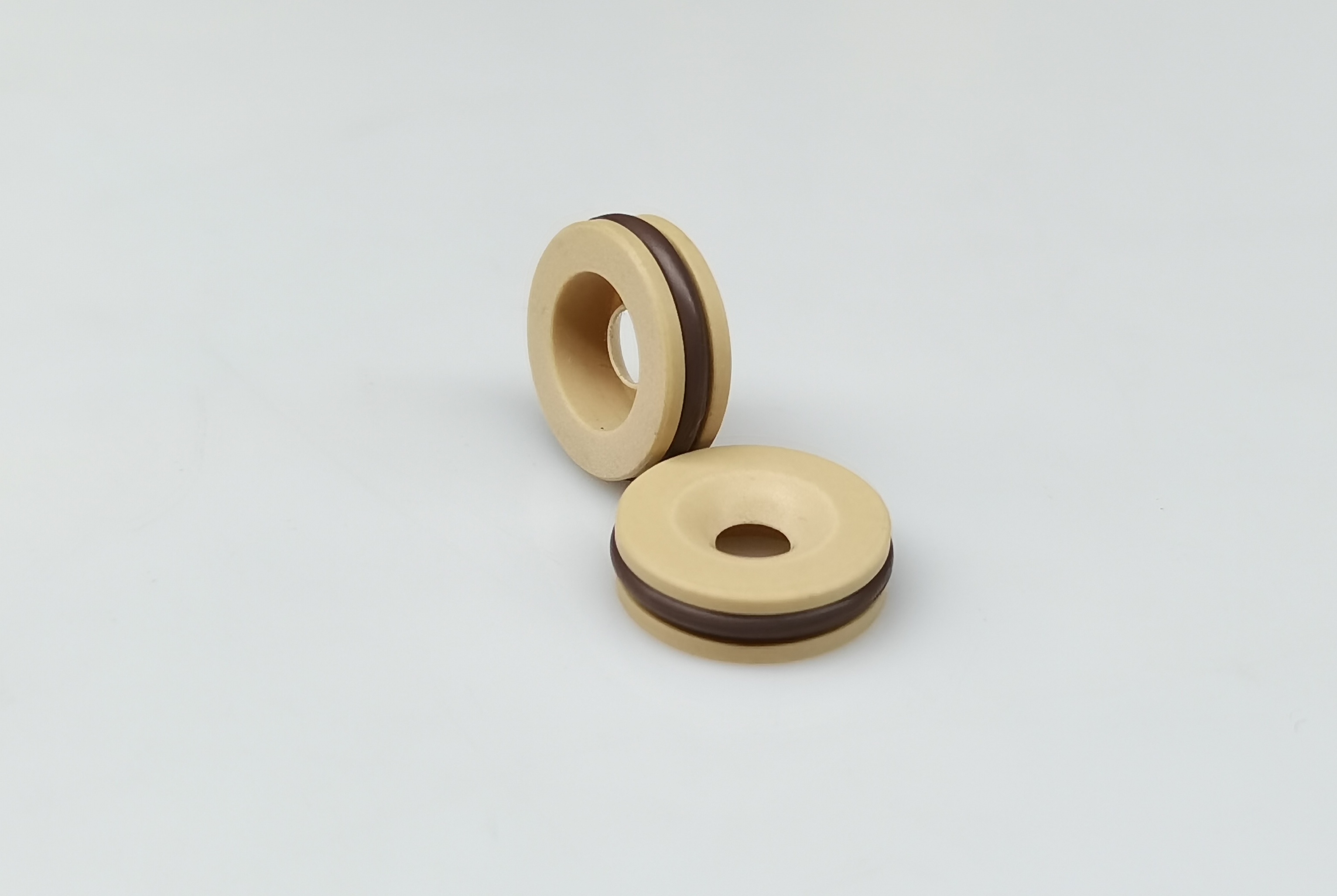The integration of 20% polyetheretherketone (PEEK) nanoparticles into PTFE matrices creates a hybrid material that redefines the limits of conventional sealing solutions. Below is a technical analysis of its properties, enhancements, and applications:
Core Characteristics: Synergistic Structural Advantages
| Property | 20% PEEK/PTFE | Pure PTFE | Improvement |
|---|---|---|---|
| Compressive Strength | 35–42 MPa | 12–15 MPa | 200% ↑ |
| PV Limit | 3.0–3.5 MPa·m/s | 0.6–0.8 MPa·m/s | 400% ↑ |
| HDT @ 0.45MPa | 260–300°C | 121°C | 120% ↑ |
| Wear Rate | 5×10⁻⁷ mm³/N·m | 2×10⁻⁶ mm³/N·m | 75% ↓ |
| Compression Creep | <15% (100°C/24h) | >50% | 70% ↓ |
PEEK’s rigid backbone provides structural support, while PTFE maintains self-lubrication, creating a “ceramic-strength + fluoropolymer-lubricity” composite.
Key Performance Enhancements
- Elimination of Cold Flow
- PEEK nanofibers (200-500 nm) form reinforcement networks in PTFE grain boundaries.
- Deformation at 10MPa/150°C drops from 47% (pure PTFE) to 11%.
- Tribological Breakthrough
- Maintains μ = 0.05–0.10 with 8× longer service life.
- Endures 5,000h under dry friction (5MPa, 1m/s) vs. pure PTFE’s 600h.
- Thermal Stability Expansion
- Continuous operating temperature: 310°C (vs. 260°C for PTFE).
- Automotive turbocharger seal life increases 400% at 300°C/15,000 rpm.
- Chemical Resistance Upgrade
Medium 20% PEEK/PTFE Pure PTFE Strong Oxidizers ✓ (98% H₂SO₄) ✘ (Fails in HNO₃ fumes) Organic Solvents ✓ (Acetone/Xylene) △ >25% swelling High-Pressure Steam ✓ (230°C/4MPa) ✘ (Creeps at 150°C)
Critical Differences from Pure PTFE
| Aspect | 20% PEEK/PTFE | Pure PTFE |
|---|---|---|
| Microstructure | Semi-IPN nanofiber-reinforced | Lamellar crystal stacking |
| Failure Mode | Uniform wear (<1μm transfer film) | Cold flow-induced collapse |
| Processing | Blend-sinter-isostatic press | Conventional compression |
| (Density >2.16 g/cm³) | (Density 2.1–2.2 g/cm³) | |
| Speed Limit | 20 m/s (dry) | <5 m/s |
Targeted Applications
- Extreme-Temperature Systems
- Aircraft fuel valves (-54°C to 280°C thermal cycling).
- PEMFC bipolar plate seals (110°C + electrochemical corrosion).
- High-Pressure/Lubricant-Free
- Supercritical CO₂ compressors (31.1MPa/100°C).
- Hydraulic servo cylinders (35MPa reciprocating motion).
- Aggressive Chemical Environments
Industry Application Advantage Semiconductor Plasma etcher chamber seals Resists CF₄/O₂ plasma Chemical Processing Concentrated H₂SO₄ pump seals Zero swelling/metal-free Medical Autoclave rotary joints 316L-grade corrosion resistance - Weight-Sensitive Equipment
- EV powertrains (60% lighter than metal seals, k >0.45 W/m·K).
Selection Guidelines
- Recommended:
✓ Temperatures >200°C without lubrication
✓ Strong acids/oxidizers (e.g., HF/H₂SO₄)
✓ PV >1.5 MPa·m/s rotary seals - Avoid:
✘ Cryogenic LH₂ service (PTFE brittleness persists)
✘ Cost-driven applications (4–6× PTFE material cost)
Next Frontier: 30% PEEK/PTFE composites now test at 350°C/25MPa for 10,000hr in nuclear reactor coolant pumps, heralding new benchmarks for extreme seals.
Post time: Jul-16-2025

